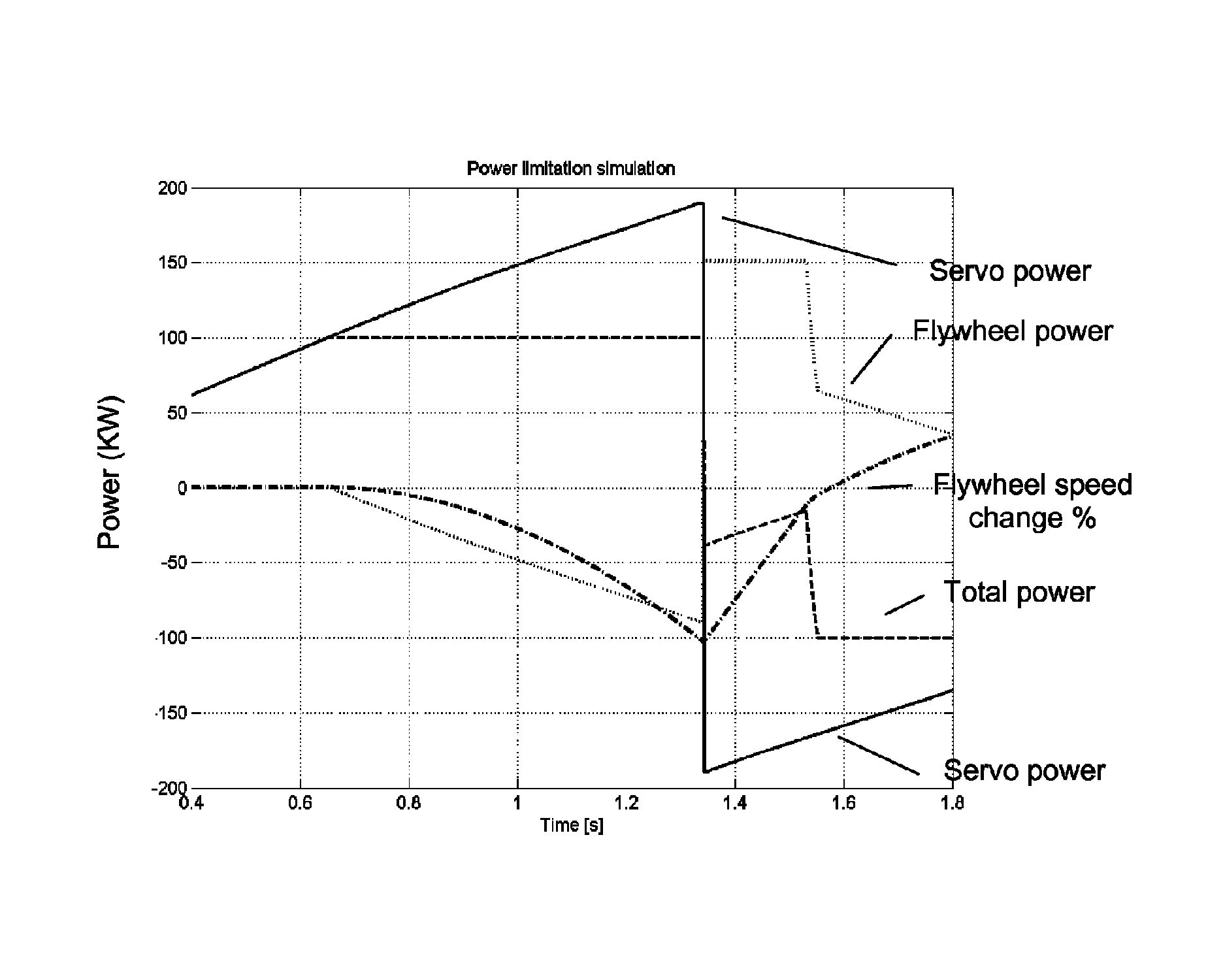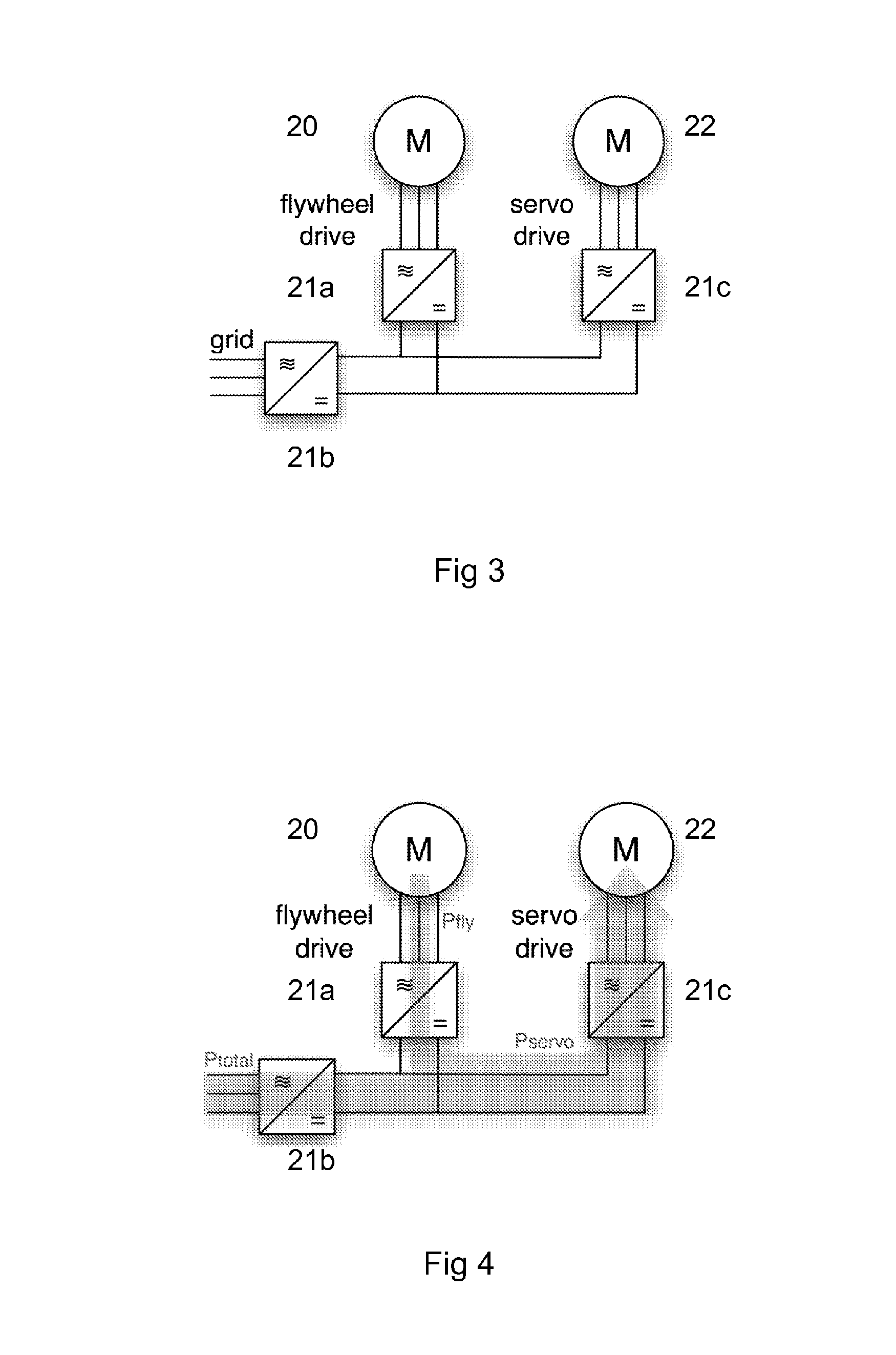Method in a production system for limiting peak power
a production system and peak power technology, applied in forging presses, manufacturing tools, forging/pressing/hammering apparatuses, etc., can solve the problems of low production rate, long cycle time, and low speed of complete operation, and achieve the effect of short cycle time, increased flexibility of production cycle, and sufficient mounting accuracy and rigidity
- Summary
- Abstract
- Description
- Claims
- Application Information
AI Technical Summary
Benefits of technology
Problems solved by technology
Method used
Image
Examples
Embodiment Construction
[0060]FIG. 1 is a diagram showing measured values against time (in seconds) for a simulation of peak power limiting by controlling a flywheel motor dependent on power of a servo motor. The curves show values for servo motor power, flywheel motor power, flywheel speed changes in %, and total power which is the combined total power consumption of both motors.
[0061]In this simulation torque control has been assumed ideal and instantaneous. An example simulation is shown in FIG. 1. Here, the total power limit had been set to 100 kW. As soon as servo power increases above this value, flywheel motor power becomes negative, keeping the total at 100 kW. When the sign of the servo power changes, the flywheel speed controller first brings flywheel speed back to close to its desired value. Then, the power limitation continues to ensure that negative total power is limited to −100 kW. In this simulation, flywheel speed drops by only 1%.
[0062]FIG. 2 is a diagram showing measured values against t...
PUM
| Property | Measurement | Unit |
|---|---|---|
| total power | aaaaa | aaaaa |
| power | aaaaa | aaaaa |
| power | aaaaa | aaaaa |
Abstract
Description
Claims
Application Information
 Login to View More
Login to View More - R&D
- Intellectual Property
- Life Sciences
- Materials
- Tech Scout
- Unparalleled Data Quality
- Higher Quality Content
- 60% Fewer Hallucinations
Browse by: Latest US Patents, China's latest patents, Technical Efficacy Thesaurus, Application Domain, Technology Topic, Popular Technical Reports.
© 2025 PatSnap. All rights reserved.Legal|Privacy policy|Modern Slavery Act Transparency Statement|Sitemap|About US| Contact US: help@patsnap.com



